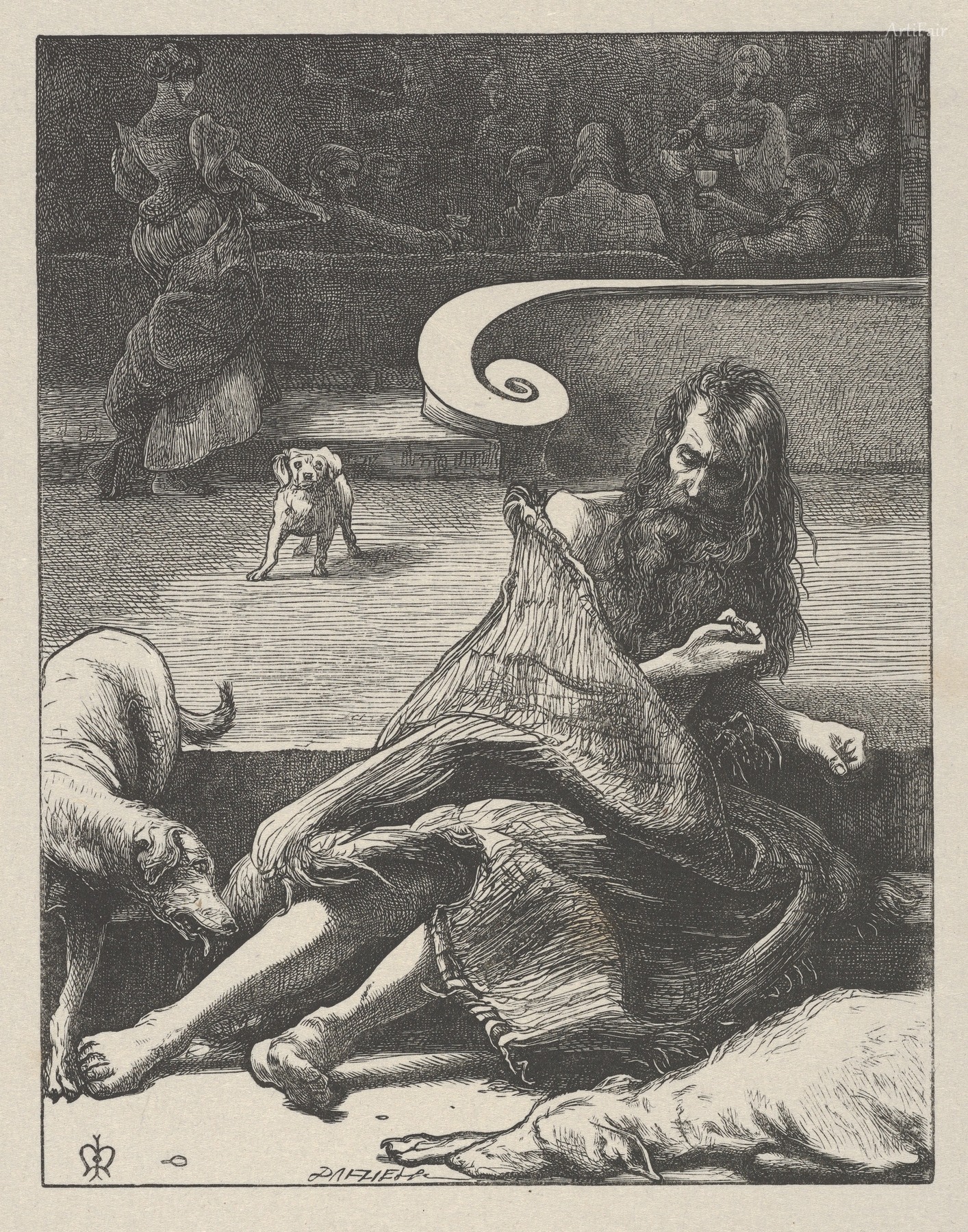
Art Appreciation
The depicted scene evokes a deep sense of despair and tragedy; at its center is Lazarus, a figure marked by both physical and emotional torment. His disheveled hair and ragged clothing starkly contrast with the opulence of the feast being enjoyed by the wealthy figures in the background. As he gazes downward, his expression mirrors a silent resilience amidst suffering, evoking a poignant feeling of longing for compassion that he does not receive. The two dogs, which seem to assist him in his solitude, create an intimate connection, hinting at a bond formed in shared misfortune.
The composition is masterfully arranged, with a slight arc leading the viewer’s eye from the lavish banquet to Lazarus’s hunched figure. The contrasts in detail and focus amplify the emotional weight of the scene; the sumptuous textures of food and lively conversation are juxtaposed with the stark realism of Lazarus's plight. Millais employs a subdued, earthy color palette that accentuates the somber atmosphere; muted tones of grey and brown reflect the poverty of Lazarus's existence while hinting at an underlying vibrancy in the affluent world he cannot access. The interplay of light and shadow further deepens the emotional resonance, encapsulating the theme of societal divide and human suffering that is woven throughout the narrative of this biblical parable.